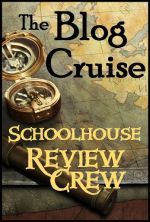Younger Daughter and Youngest Son sometimes request that we "do science" meaning some hands-on science. Most of the activities take only a few minutes and many use ordinary household materials.
Today, we had a bit of a science afternoon.
The potatoes from the Potatoes for Schools project needed chitting. Youngest Son spent some time taking them out again and then replacing them. Thankfully, the two different varieties sent aren't the same colour!
Middle Son spent made bread. We've talked about yeast many times but today talked about the role of kneading in distributing yeast.
The final product disappeared fast-too, quickly for a picture.
A couple of weeks ago, Youngest Son helped plant an amaryllis bulb. He insisted on putting his Bob the builder in with the bulb which has proved a useful measure of its height.
This is the bulb when it was first planted and the picture below is today.
Recently, I brought some paper coffee filters and we used these in two activities:
Chromatography: separating the dyes in felt tip pen ink.
We made the filter paper damp and then put a large blob in the centre. We were careful not to use primary colours for this. True primary colours will not separate.
Best of all, filtering very muddy water. Making the mud was a happy occupation and resulted in particularly dirty water.
We poured it through a funnel,
filtered it
and refiltered it.
The end product certainly wasn't fit to drink but was a fair representation of a water purification process.
One of the requested activities was, one of the few that we hadn't yet done, from the Usborne Big book of Science things to make and do. This involved making a balloon into a rocket on a string. Sorry about the blur-the balloon was travelling at speed!
Virtually every week, one of the children makes a volcano. Youngest Daughter enjoys this but her little brother likes to be in on the act and added vanilla today for extra fragrance.
The important ingredients are the vinegar (acid) and sodium bicarbonate (alkali) but the children like to add washing up liquid and food colouring. The washing up liquid creates extra bubbles.
Mix all the ingredients, except the vinegar, in a broad necked jar on a baking tray.
Add the vinegar and watch the volcano.
These are a few links to other fun science activities:
Mixing oil and water
Science in the kitchen
Opening flower activity
and some Fun science resources.
This post is linked to It's Playtime, Fun Sparks, Homeschool Science Share and Tell, Living Life Intentionally and the Old Schoolhouse Crew blog cruise.















There are loads of great ideas here. This is one of those areas I fail in our homeschool. Science was my passion growing up so I'm not sure why it doesn't take pride of place in our school. Seeing lots of wonderful activities like these ones makes me want to make a bit more of an effort!
ReplyDeleteClaire, having read your post on bones, I don't think you fail at science. I know what you mean though about some subjects not taking pride of place-I've got plenty of those!
ReplyDeleteAh, but I started A & P in September and we've only just started Chapter 3. I'll be retired before I get to the end of the book!!
ReplyDeleteAnd your children will all be starting at med school!
DeleteYou have a great point about informal science! My son leads me to random science explorations all of the time. Thanks for sharing such wonderful ideas. I especially like working with yeast in bread and filtering. :)
ReplyDeleteThank you. Funny how children love this sort of science.
DeleteThank you so much for linking up your post at Apologia's Homeschool Science Share and Tell! We appreciate your participation!
ReplyDeleteWe love filtering muddy water! What a great lost of activities, thanks so much for linking to Science Sparks. x
ReplyDelete